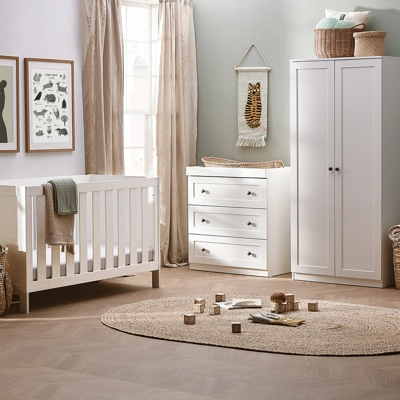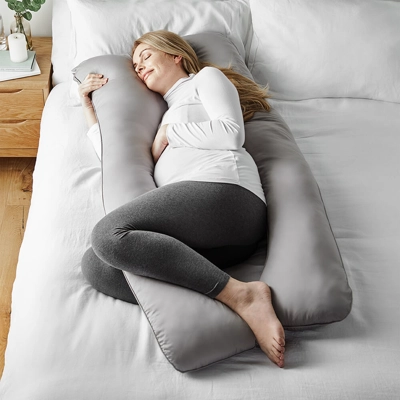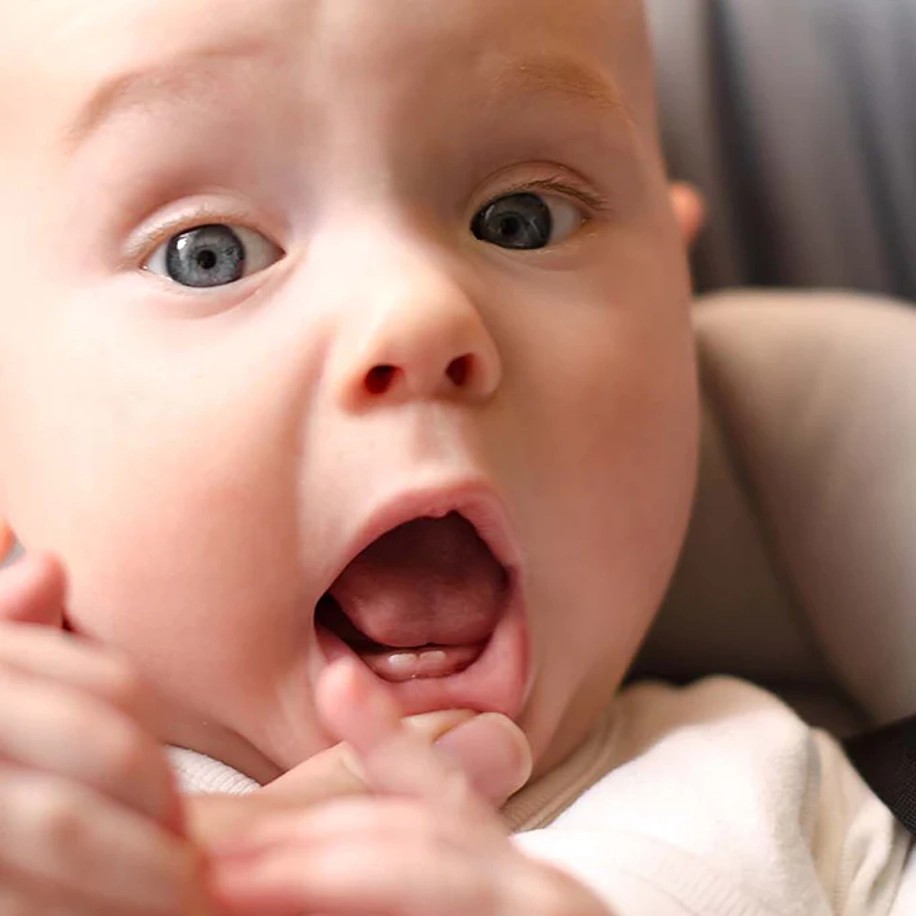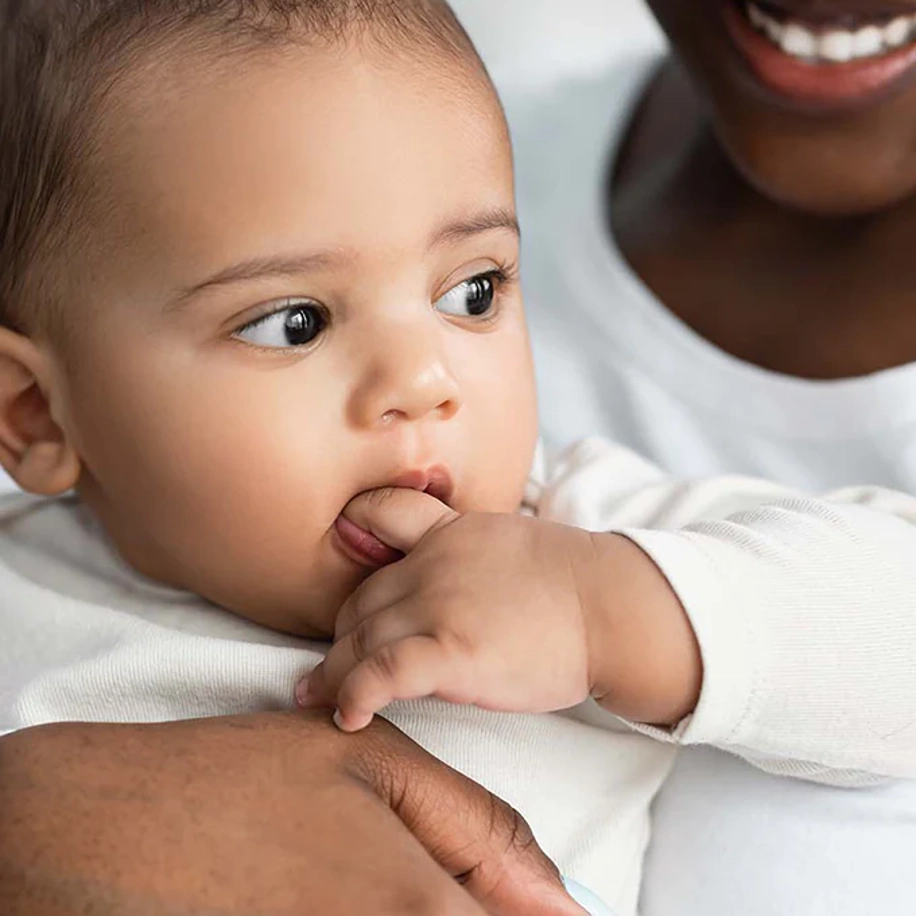
Sale
New In
Pushchairs & Strollers
Car Seats
Nursery
Feeding
Family Hub

Includes Buffet Highchair, Mealtime set, Silicone tray

Includes Clic 2 stroller, Clic stroller bag and rain cover


For the best night’s sleep in every trimester
Ensuring your child has a healthy mouth and healthy teeth starts before the very first milestone tooth even appears. We talk all things teething with Dominique Tillen, founder and MD of dental care experts Brush-Baby.
It is a rite of passage for everybody and quite simply it’s when your little one’s teeth begin to appear. From birth, all babies have teeth beneath their gums, and they will eventually emerge to give your child their full set of 20 milk teeth.
Teething may start as early as three months and as late as 12 months. Generally, first teeth appear between six and nine months and typically arrive in ‘pairs’ i.e., bottom teeth first. Although rare, some little ones can even be born with some teeth, which are called natal teeth (ouch!)
"Did you know? All 20 of a baby’s set of first teeth are already in their jaw at birth (they form in the womb as early as 6 weeks into pregnancy"

Teething signs to look out for:
• More dribbling than normal
• Rash or sore spots around the chin and mouth from dribbling
• One red flushed cheek
• Disturbed sleep caused by pain or discomfort
• More fussy or irritable than normal
• Chewing/gnawing on hard objects to relieve the pressure
• Pulling or rubbing their ears
• Sore, inflamed, red gums
Teeth do not ‘cut’ through gums.
Biologically, babies’ teeth do not ‘cut’ or ‘pierce’ through the gum tissue. Instead, special chemicals are released causing cells in the gums to separate and recede allowing new teeth to come through.
So why can teething seem to be painful?
Pain and distress during teething is usually due to inflammation and infection of the gum tissue. This is caused by bacteria and microscopic material getting into the gum tissue as the gums open and withdraw to let the new tooth move upwards. Food and milky deposits may also get caught in tiny gum flaps around the newly emerged tooth.
"Did you know? Your teeth (the same as fingerprints) are unique to you – even identical twins don’t have the same teeth."
Decay happens when sugars in food and drinks react with the bacteria in plaque, forming acids. Every time a little one eats or drinks anything containing sugars, acids start to soften and dissolve the enamel.
Clean your baby’s gums every day – at least twice a day morning and night, and ideally after every feeding session to reduce bacteria and food deposit build-up by using:
• A clean cloth dipped into cooled, boiled water or
• A specially-designed DentalWipe from Brush-Baby – a hand, hygienically-sealed wipe containing Xylitol to neutralise sugar acids.
Yes – start as you mean to go on! Brush teeth from when the first one appears as it also helps to keep teething gums clean.
By doing this you’re not only keeping the oral cavity clean and providing a good environment for teeth to emerge into, you’re also familiarising your child with an oral care routine which may help to minimise any toothbrushing battles later on!
We’ve got every type of toothbrush to help including a Chewable Toothbrush with its unique design which allows a baby to chew the toothbrush and soothe gums and clean teeth at the same time!
"Did you know? Undecayed baby teeth can be used for stem cell treatment."

What about the teeth at the back – nobody ever talks about them?
Molars (usually eight of them) are large flat teeth at the back of the mouth and they usually appear from 13 months of age and are used primarily to grind food. They can be the most troublesome teeth as they emerge.
A clean mouth is particularly important. This is because these teeth have a large flat surface and as they emerge, food and bacteria can become ‘trapped’ in gums flaps around the tooth. During this time, your toddler will welcome something to really bite down upon, such as Brush-Baby’s Molar Munch.
Teething toothpaste – is there such a thing?
Yes, there is! Brush-Baby’s has been specially formulated to soothe sore gums gently. Try a smear of Teething Toothpaste on a dummy, teether or one of our specifically designed toothbrushes for babies. Don’t panic if your baby isn’t a fan of the new sensation either. Just persevere and try to get a little bit of toothpaste in the mouth, as combined with saliva this will ‘pool’ around any teeth and gum line.
"Did you know? Babies have more tastebuds than adults – typically 10,000 tastebuds compared to adults with 5,000 – and consequently are more sensitive to taste."
While teething can sometimes be distressing it will never make your baby or toddler ill. It usually coincides with the time that little ones are losing their protective material antibodies and building up their own, and consequently at this time they can be more susceptible to infection and minor illness. However, if they seem unwell, have a fever, diarrhoea, vomiting or earache always consult your doctor.
If you feel like you’ve tried everything, and your baby is still unhappy while teething, there are pain relief medicines available. Teething gels, creams or powder can numb sore gums, or you can also give your baby age-appropriate painkillers such as baby paracetamol or ibuprofen. Always be sure to speak to your health visitor or GP first for the best advice.
At Brush-Baby we’re advocates of the BSPD’s (British Society of Paediatric Dentists) campaign which suggest that all babies should see a dentist before the age of one. It really is never too soon to look after those all-important teeth which a baby needs to eat, speak and smile!
Dental decay is one of the world’s most preventable diseases. Establishing healthy habits is the best dental care start that you can give your little one!

Dominique Tillen is the founder and MD of Brush-Baby, offering gum and dental care products for babies, toddlers and young children, recognising the different daily needs of children compared to adults. As a mother herself, she understands the frustrations and concerns parents have on how to look after their child’s oral health. Dominique, and products from the Brush-Baby range, have won awards for putting children’s oral care firmly into the healthcare arena, and she is a member of the All-Party Parliamentary Group who are campaigning for all children to have ‘A fit and healthy childhood.’